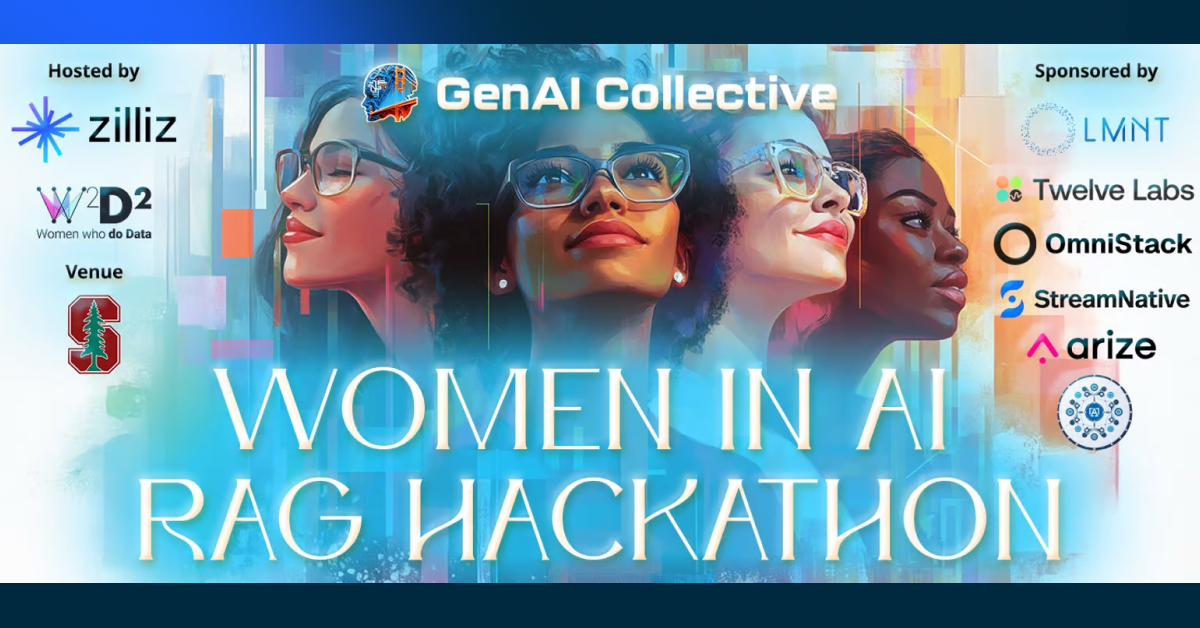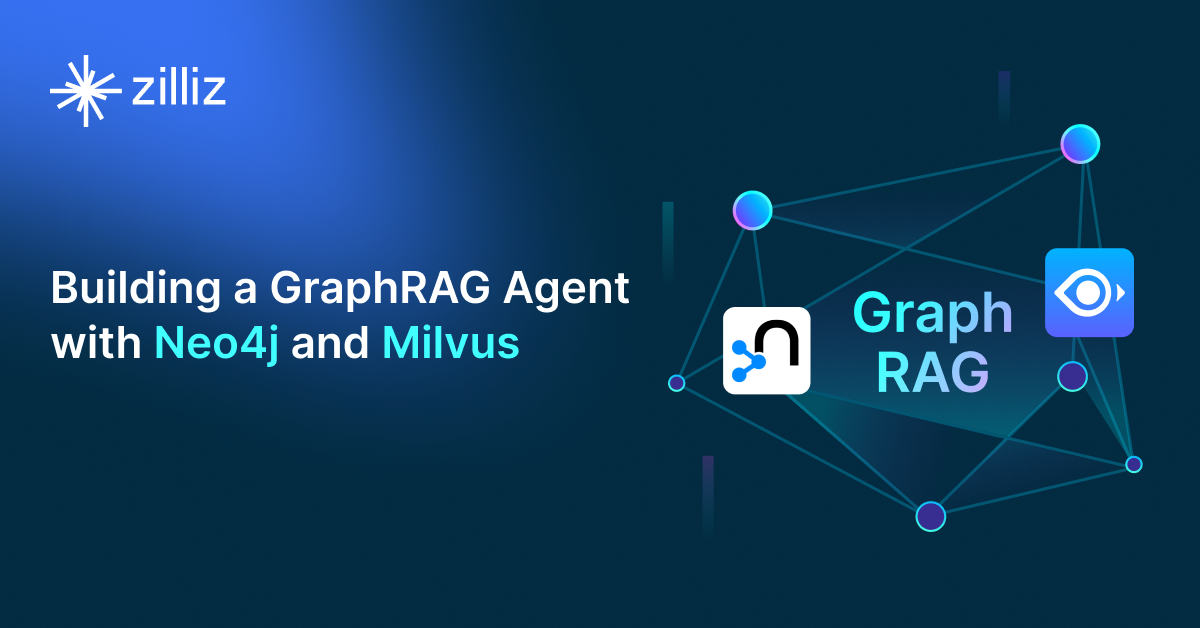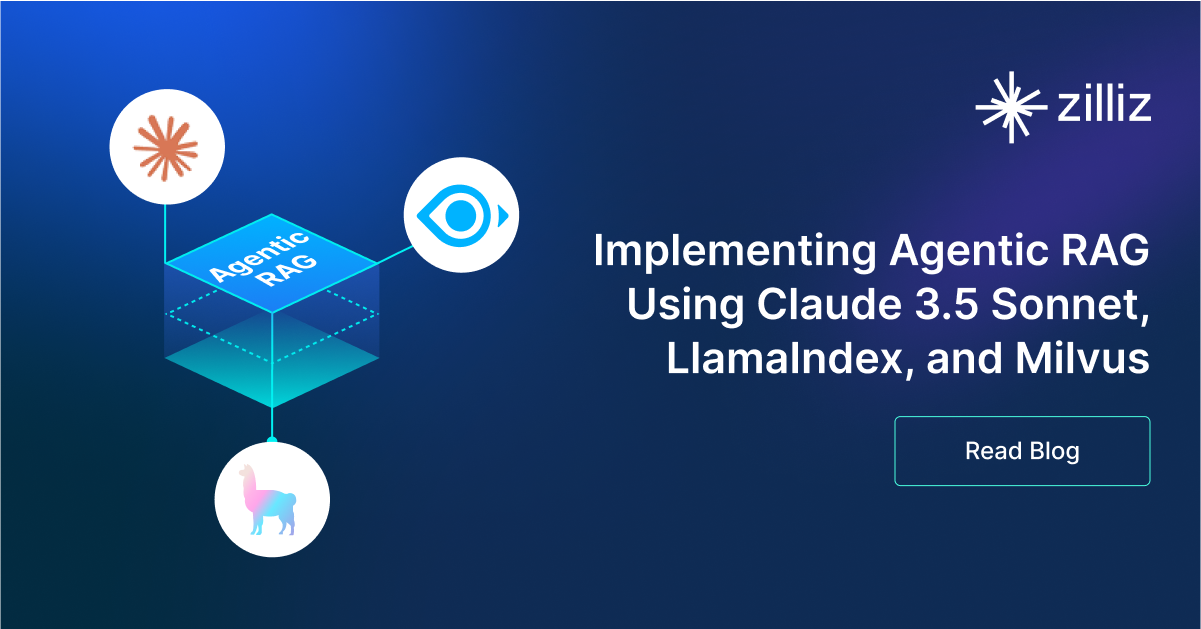Build RAG Chatbot with LangChain, OpenSearch, NVIDA Llama 3 70B Instruct, and NVIDIA nv-embedqa-e5-v5
Introduction to RAG
Retrieval-Augmented Generation (RAG) is a game-changer for GenAI applications, especially in conversational AI. It combines the power of pre-trained large language models (LLMs) like OpenAI’s GPT with external knowledge sources stored in vector databases such as Milvus and Zilliz Cloud, allowing for more accurate, contextually relevant, and up-to-date response generation. A RAG pipeline usually consists of four basic components: a vector database, an embedding model, an LLM, and a framework.
Key Components We'll Use for This RAG Chatbot
This tutorial shows you how to build a simple RAG chatbot in Python using the following components:
- LangChain: An open-source framework that helps you orchestrate the interaction between LLMs, vector stores, embedding models, etc, making it easier to integrate a RAG pipeline.
- OpenSearch: An open-source search and analytics suite derived from Elasticsearch. It offers robust full-text search and real-time analytics, with vector search available as an add-on for similarity-based queries, extending its capabilities to handle high-dimensional data. Since it is just a vector search add-on rather than a purpose-built vector database, it lacks scalability and availability and many other advanced features required by enterprise-level applications. Therefore, if you prefer a much more scalable solution or hate to manage your own infrastructure, we recommend using Zilliz Cloud, which is a fully managed vector database service built on the open-source Milvus and offers a free tier supporting up to 1 million vectors.)
- NVIDIA Llama 3 70B Instruct: This powerful model is designed for instruction-following tasks, leveraging its 70 billion parameters to deliver high-quality responses. It excels in generating detailed answers and engaging in complex dialogues, making it ideal for educational tools, customer support, and interactive applications that require nuanced understanding and guidance.
- NVIDIA nv-embedqa-e5-v5: This model combines advanced natural language processing with deep learning to perform efficient question answering. It excels in understanding context and providing accurate responses from embedded knowledge sources. Ideal for applications in customer support, chatbots, and interactive learning environments, it enhances user engagement through intuitive interactions.
By the end of this tutorial, you’ll have a functional chatbot capable of answering questions based on a custom knowledge base.
Note: Since we may use proprietary models in our tutorials, make sure you have the required API key beforehand.
Step 1: Install and Set Up LangChain
%pip install --quiet --upgrade langchain-text-splitters langchain-community langgraph
Step 2: Install and Set Up NVIDA Llama 3 70B Instruct
pip install -qU "langchain-nvidia-ai-endpoints"
import getpass
import os
if not os.environ.get("NVIDIA_API_KEY"):
os.environ["NVIDIA_API_KEY"] = getpass.getpass("Enter API key for NVIDIA: ")
from langchain.chat_models import init_chat_model
llm = init_chat_model("meta/llama3-70b-instruct", model_provider="nvidia")
Step 3: Install and Set Up NVIDIA nv-embedqa-e5-v5
pip install -qU langchain-nvidia-ai-endpoints
import getpass
import os
if not os.environ.get("NVIDIA_API_KEY"):
os.environ["NVIDIA_API_KEY"] = getpass.getpass("Enter API key for NVIDIA: ")
from langchain_nvidia_ai_endpoints import NVIDIAEmbeddings
embeddings = NVIDIAEmbeddings(model="nvidia/nv-embedqa-e5-v5")
Step 4: Install and Set Up OpenSearch
pip install --upgrade --quiet opensearch-py langchain-community
from langchain_community.vectorstores import OpenSearchVectorSearch
opensearch_vector_search = OpenSearchVectorSearch(
"http://localhost:9200",
"embeddings",
embedding_function
)
Step 5: Build a RAG Chatbot
Now that you’ve set up all components, let’s start to build a simple chatbot. We’ll use the Milvus introduction doc as a private knowledge base. You can replace it with your own dataset to customize your RAG chatbot.
import bs4
from langchain import hub
from langchain_community.document_loaders import WebBaseLoader
from langchain_core.documents import Document
from langchain_text_splitters import RecursiveCharacterTextSplitter
from langgraph.graph import START, StateGraph
from typing_extensions import List, TypedDict
# Load and chunk contents of the blog
loader = WebBaseLoader(
web_paths=("https://milvus.io/docs/overview.md",),
bs_kwargs=dict(
parse_only=bs4.SoupStrainer(
class_=("doc-style doc-post-content")
)
),
)
docs = loader.load()
text_splitter = RecursiveCharacterTextSplitter(chunk_size=1000, chunk_overlap=200)
all_splits = text_splitter.split_documents(docs)
# Index chunks
_ = vector_store.add_documents(documents=all_splits)
# Define prompt for question-answering
prompt = hub.pull("rlm/rag-prompt")
# Define state for application
class State(TypedDict):
question: str
context: List[Document]
answer: str
# Define application steps
def retrieve(state: State):
retrieved_docs = vector_store.similarity_search(state["question"])
return {"context": retrieved_docs}
def generate(state: State):
docs_content = "\n\n".join(doc.page_content for doc in state["context"])
messages = prompt.invoke({"question": state["question"], "context": docs_content})
response = llm.invoke(messages)
return {"answer": response.content}
# Compile application and test
graph_builder = StateGraph(State).add_sequence([retrieve, generate])
graph_builder.add_edge(START, "retrieve")
graph = graph_builder.compile()
Test the Chatbot
Yeah! You've built your own chatbot. Let's ask the chatbot a question.
response = graph.invoke({"question": "What data types does Milvus support?"})
print(response["answer"])
Example Output
Milvus supports various data types including sparse vectors, binary vectors, JSON, and arrays. Additionally, it handles common numerical and character types, making it versatile for different data modeling needs. This allows users to manage unstructured or multi-modal data efficiently.
Optimization Tips
As you build your RAG system, optimization is key to ensuring peak performance and efficiency. While setting up the components is an essential first step, fine-tuning each one will help you create a solution that works even better and scales seamlessly. In this section, we’ll share some practical tips for optimizing all these components, giving you the edge to build smarter, faster, and more responsive RAG applications.
LangChain optimization tips
To optimize LangChain, focus on minimizing redundant operations in your workflow by structuring your chains and agents efficiently. Use caching to avoid repeated computations, speeding up your system, and experiment with modular design to ensure that components like models or databases can be easily swapped out. This will provide both flexibility and efficiency, allowing you to quickly scale your system without unnecessary delays or complications.
OpenSearch optimization tips
To optimize OpenSearch in a Retrieval-Augmented Generation (RAG) setup, fine-tune indexing by enabling efficient mappings and reducing unnecessary stored fields. Use HNSW for vector search to speed up similarity queries while balancing recall and latency with appropriate ef_search and ef_construction values. Leverage shard and replica settings to distribute load effectively, and enable caching for frequent queries. Optimize text-based retrieval with BM25 tuning and custom analyzers for better relevance. Regularly monitor cluster health, index size, and query performance using OpenSearch Dashboards and adjust configurations accordingly.
NVIDIA Llama 3 70B Instruct optimization tips
NVIDIA Llama 3 70B Instruct is a high-precision model ideal for RAG applications requiring in-depth reasoning and analysis. Optimize retrieval by using hierarchical document ranking to filter only the most relevant passages, reducing unnecessary token consumption. Structure prompts with a clear separation between user queries, retrieved context, and system instructions for optimal performance. Keep temperature between 0.1 and 0.3 for factual consistency while fine-tuning top-k and top-p for better control over response diversity. Leverage NVIDIA’s TensorRT-LLM and optimized inference stacks to accelerate model execution and reduce latency. Use batching strategies to improve throughput for high-volume workloads. If deploying multiple models, assign Llama 3 70B to handle complex queries requiring deep contextual understanding while reserving lighter models for faster, low-complexity tasks.
NVIDIA nv-embedqa-e5-v5 optimization tips
To optimize the NVIDIA nv-embedqa-e5-v5 in a Retrieval-Augmented Generation (RAG) setup, first ensure that your model is correctly fine-tuned with a diverse training dataset to enhance retrieval accuracy. Utilize mixed precision training to boost computational efficiency and reduce memory usage. Implement batching for queries and responses to leverage parallel processing capabilities. Regularly monitor and adjust the learning rate and other hyperparameters for optimal training performance. Finally, incorporate caching mechanisms for frequently accessed embeddings and results to significantly speed up retrieval times.
By implementing these tips across your components, you'll be able to enhance the performance and functionality of your RAG system, ensuring it’s optimized for both speed and accuracy. Keep testing, iterating, and refining your setup to stay ahead in the ever-evolving world of AI development.
RAG Cost Calculator: A Free Tool to Calculate Your Cost in Seconds
Estimating the cost of a Retrieval-Augmented Generation (RAG) pipeline involves analyzing expenses across vector storage, compute resources, and API usage. Key cost drivers include vector database queries, embedding generation, and LLM inference.
RAG Cost Calculator is a free tool that quickly estimates the cost of building a RAG pipeline, including chunking, embedding, vector storage/search, and LLM generation. It also helps you identify cost-saving opportunities and achieve up to 10x cost reduction on vector databases with the serverless option.
 Calculate your RAG cost
Calculate your RAG cost
What Have You Learned?
By diving into this tutorial, you’ve unlocked the power of combining cutting-edge tools to build a robust RAG system from scratch! You learned how LangChain acts as the glue, orchestrating workflows and connecting components seamlessly—like a conductor leading an orchestra of AI tools. OpenSearch stepped in as your scalable vector database, storing and retrieving dense embeddings with lightning speed, ensuring your system can handle real-time queries without breaking a sweat. The NVIDIA Llama 3 70B Instruct model then took center stage, leveraging its massive parameter count and fine-tuned instruction-following capabilities to generate human-like, context-aware responses. And let’s not forget the NVIDIA nv-embedqa-e5-v5 embedding model, which transformed your raw text into rich numerical representations, making semantic search not just possible but powerful. Together, these pieces formed a dynamic RAG pipeline that bridges the gap between static knowledge and dynamic, conversational AI—proving that retrieval-augmented generation is more than a buzzword; it’s a game-changer!
But wait—there’s more! You also picked up pro tips for optimizing costs and performance, like tweaking chunk sizes and balancing latency with accuracy. The free RAG cost calculator you explored is a golden ticket to budgeting smarter and scaling fearlessly. Now that you’ve seen how these tools harmonize, the real magic begins: your turn. Whether you’re building chatbots, research assistants, or enterprise-grade knowledge bases, you’ve got the blueprint. So fire up your IDE, experiment with new datasets, and let your creativity run wild. The future of AI-driven applications is yours to shape—go build something extraordinary and watch your ideas come to life! 🚀
Further Resources
🌟 In addition to this RAG tutorial, unleash your full potential with these incredible resources to level up your RAG skills.
- How to Build a Multimodal RAG | Documentation
- How to Enhance the Performance of Your RAG Pipeline
- Graph RAG with Milvus | Documentation
- How to Evaluate RAG Applications - Zilliz Learn
- Generative AI Resource Hub | Zilliz
We'd Love to Hear What You Think!
We’d love to hear your thoughts! 🌟 Leave your questions or comments below or join our vibrant Milvus Discord community to share your experiences, ask questions, or connect with thousands of AI enthusiasts. Your journey matters to us!
If you like this tutorial, show your support by giving our Milvus GitHub repo a star ⭐—it means the world to us and inspires us to keep creating! 💖
- Introduction to RAG
- Key Components We'll Use for This RAG Chatbot
- Step 1: Install and Set Up LangChain
- Step 2: Install and Set Up NVIDA Llama 3 70B Instruct
- Step 3: Install and Set Up NVIDIA nv-embedqa-e5-v5
- Step 4: Install and Set Up OpenSearch
- Step 5: Build a RAG Chatbot
- Optimization Tips
- RAG Cost Calculator: A Free Tool to Calculate Your Cost in Seconds
- What Have You Learned?
- Further Resources
- We'd Love to Hear What You Think!
Content
Vector Database at Scale
Zilliz Cloud is a fully-managed vector database built for scale, perfect for your RAG apps.
Try Zilliz Cloud for Free


